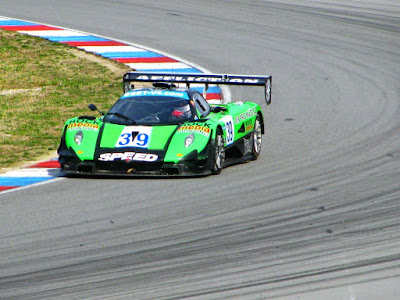
Sport Car Pagani Huayara
PAGANI HUAYARA
ABOUT PAGANI:
The Pagani Huayra (Italian pronunciation: [ˈwai̯ra]) is an Italian mid-engined sports car produced by Pagani. Succeeding the company's previous offering, the Zonda, it had a base price of €850,000 ($1.1M). It is named after Huayra-tata, a Quechua wind god.[2][3] The Huayra was named "The Hypercar of the Year 2012" by Top Gear magazine and received a very positive review when tested by Richard Hammond on Top Gear. On February 11, 2015 it was reported that the Pagani Huayra has been sold out. The Huayra was limited to just 100 units as part of Pagani's agreement with engine supplier Mercedes-AMG.[4]
The Pagani Huayra was officially debuted online with several pictures in a press release on January 25, 2011.[3][5][6] The official world debut was at the 2011 Geneva Motor Show held in March.[7]
| Pagani Huayra | |
|---|---|
 | |
| Overview | |
| Manufacturer | Pagani Automobili S.p.A. |
| Production | 2012–2018[1] 2017–present (roadster) 2017–present (BC) |
| Assembly | Modena, Italy |
| Designer | Horacio Pagani |
| Body and chassis | |
| Class | Sports car (S) |
| Body style | 2-door coupe 2-door roadster |
| Layout | RMR layout |
| Doors | Gull-wing (coupe) Swan (roadster) |
| Powertrain | |
| Engine | 370 cu in (6.0 L) AMG bi-turboM158 V12 |
| Power output | 730 PS (537 kW; 720 hp) (coupe) 764 PS (562 kW; 754 hp) (roadster) 755 PS (555 kW; 745 hp) (BC) |
| Transmission | 7-speed sequential |
| Dimensions | |
| Wheelbase | 2,795 mm (110.0 in) |
| Length | 4,605 mm (181.3 in) |
| Width | 2,036 mm (80.2 in) |
| Height | 1,169 mm (46.0 in) |
| Curb weight | 1,350 kg (2,976 lb) (dry) 1,697 kg (3,741 lb) (wet) 1,280 kg (2,822 lb) (Roadster) 1,218 kg (2,685 lb) (Huayra BC) |
| Chronology | |
| Predecessor | Pagani Zonda |
Engine
Mercedes-Benz's AMG division provides the engine of the Huayra which is hand-built. The 6.0 L (5,980 cc) twin-turbo AMG M158 60° V12, has been designed at the request of Pagani to reduce turbo lag and improve response, realized with smaller turbos, a different intercooler configuration and re-programmed ECU settings.
Like many high-performance cars, the Huayra uses dry sump lubrication. This has several key benefits including guaranteeing oil flow even when the car is subjected to extreme lateral acceleration, preventing "oil surge" which allows the engine to operate more efficiently while the lack of an oil pan allows mounting the engine lower, lowering the car's center of gravity and improving handling. The fuel consumption of the Huayra is 10 mpg‑US (23.5 L/100 km; 12.0 mpg‑imp) in city and 14 mpg‑US (16.8 L/100 km; 16.8 mpg‑imp) in highway (EPA testing).
A water / oil heat exchanger reduces engine warm-up times on cold days and helps maintain a stable temperature for refrigerants and lubricants.
To minimize the use of pipes and fittings (and the overall weight of the vehicle), the expansion tank is mounted directly on the engine. Intercooler fins act as an expansion tank circuit at low temperatures.
The titanium exhaust system was designed and built by MHG-Fahrzeugtechnik.[9] Hydroformed joints were developed to reduce back pressure and ensure a free flow exhaust. Titanium reduces the weight of the exhaust system while the Inconel silencers improve reliability in the most exposed parts of the exhaust at high temperatures. The entire system weighs less than 10 kg (22 lb).
Aerodynamics[edit]
The Pagani Huayra is different from its predecessor in that it incorporates active aerodynamics.[3] It is capable of changing the height of the front from the ground and independently operating four flaps placed at the rear and front of the car.[3] The behavior of the flaps is managed by a dedicated control unit that is fed information from systems such as the ABS and ECU, which pass on information about the car's speed, yaw rate, lateral acceleration, steering angle and throttle position.[11] This is intended to achieve minimal drag coefficientor maximum downforce depending on the situation.[3] The Huayra's designer Horacio Pagani states that it has a variable drag coefficient of between .31 and .37.[12] The system also prevents excess body roll in the corners by raising the "inside" flaps (i.e. the left ones in a left-handed corner and vice versa), increasing the downforce on that side of the car. The rear flaps also act as an airbrake. Under hard braking, both the front suspension and the two rear flaps are raised to counteract weight transfer to the front wheels and keep the whole car stable, for instance when entering a corner.[11] Air from the radiator is extracted through an arch in the bonnet at an angle that is designed not to affect the streamline around the body. The side air intakes behind the front wheels create a low pressure zone, resulting in downforce.













:strip_icc():format(jpeg)/kly-media-production/medias/2998955/original/042015100_1576584434-Doa_HL1.jpg)
